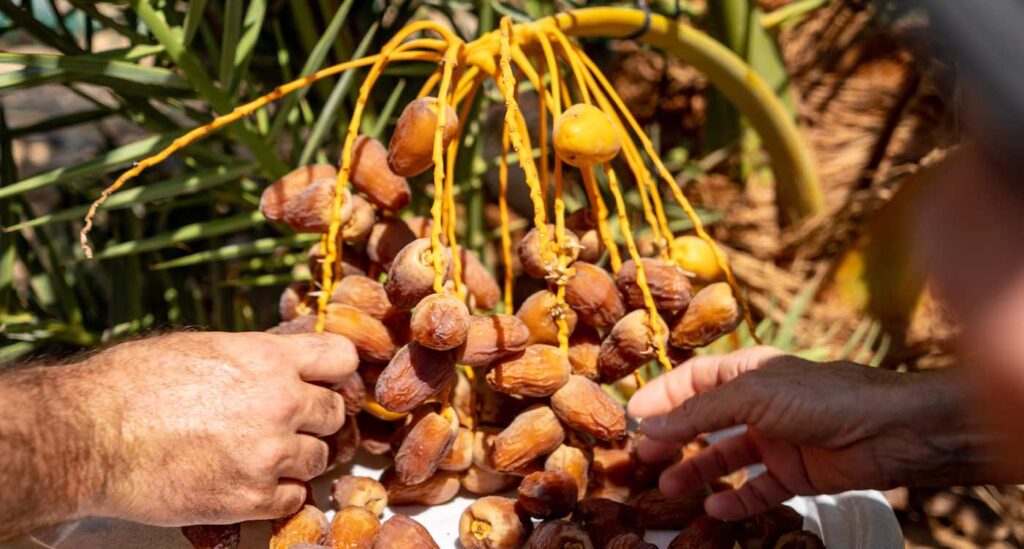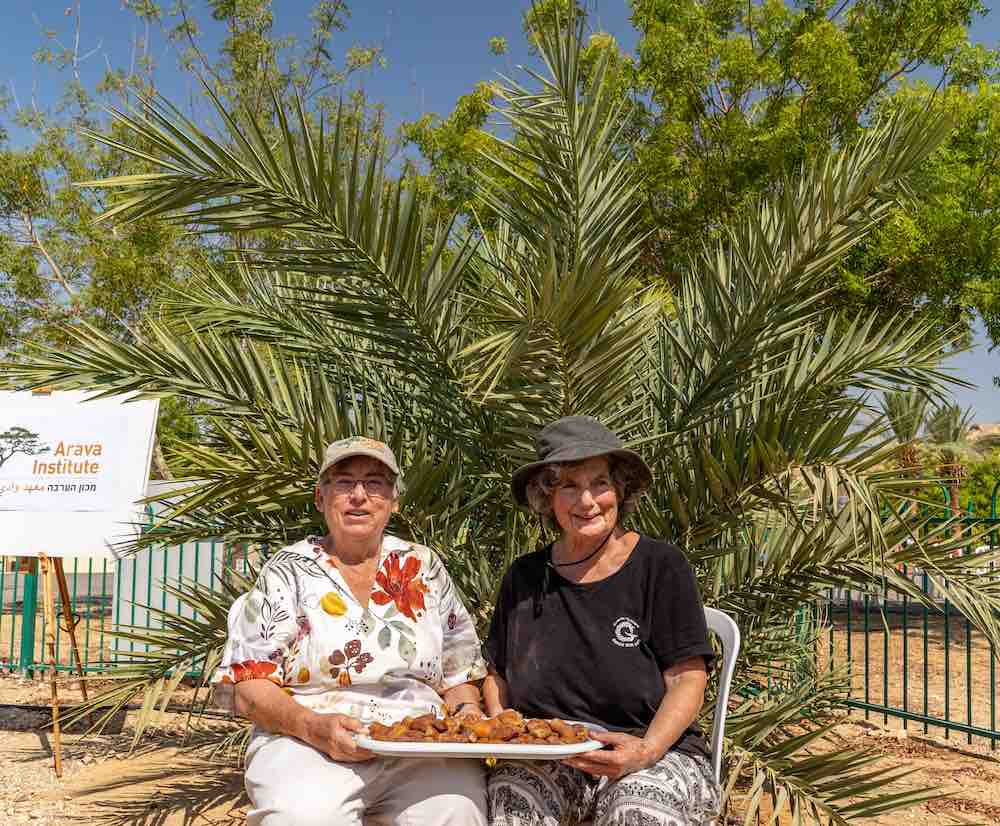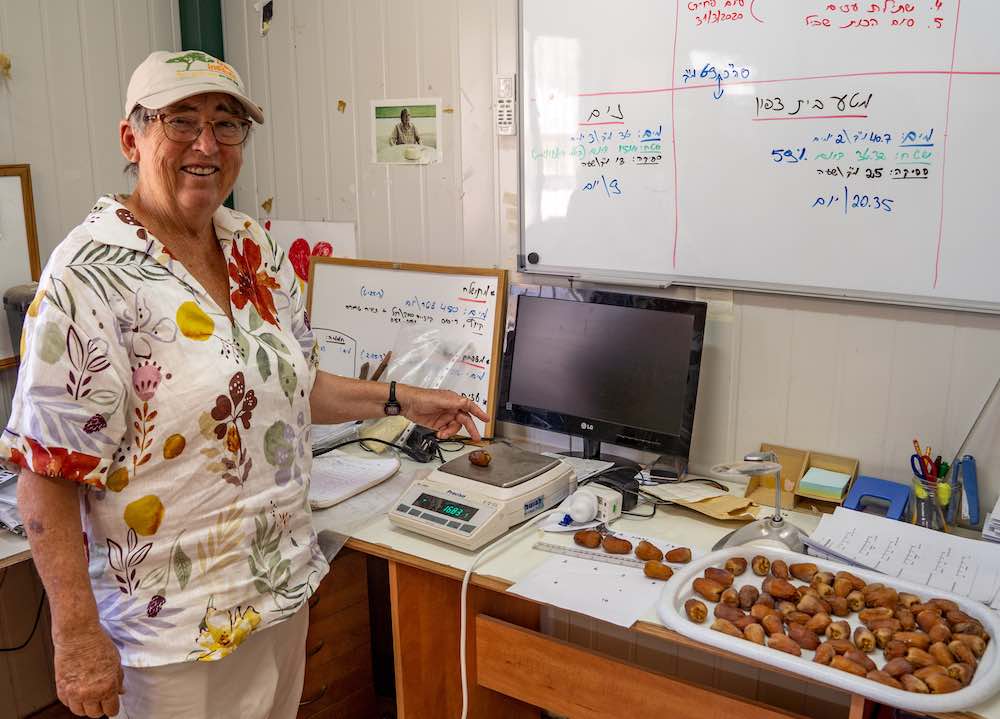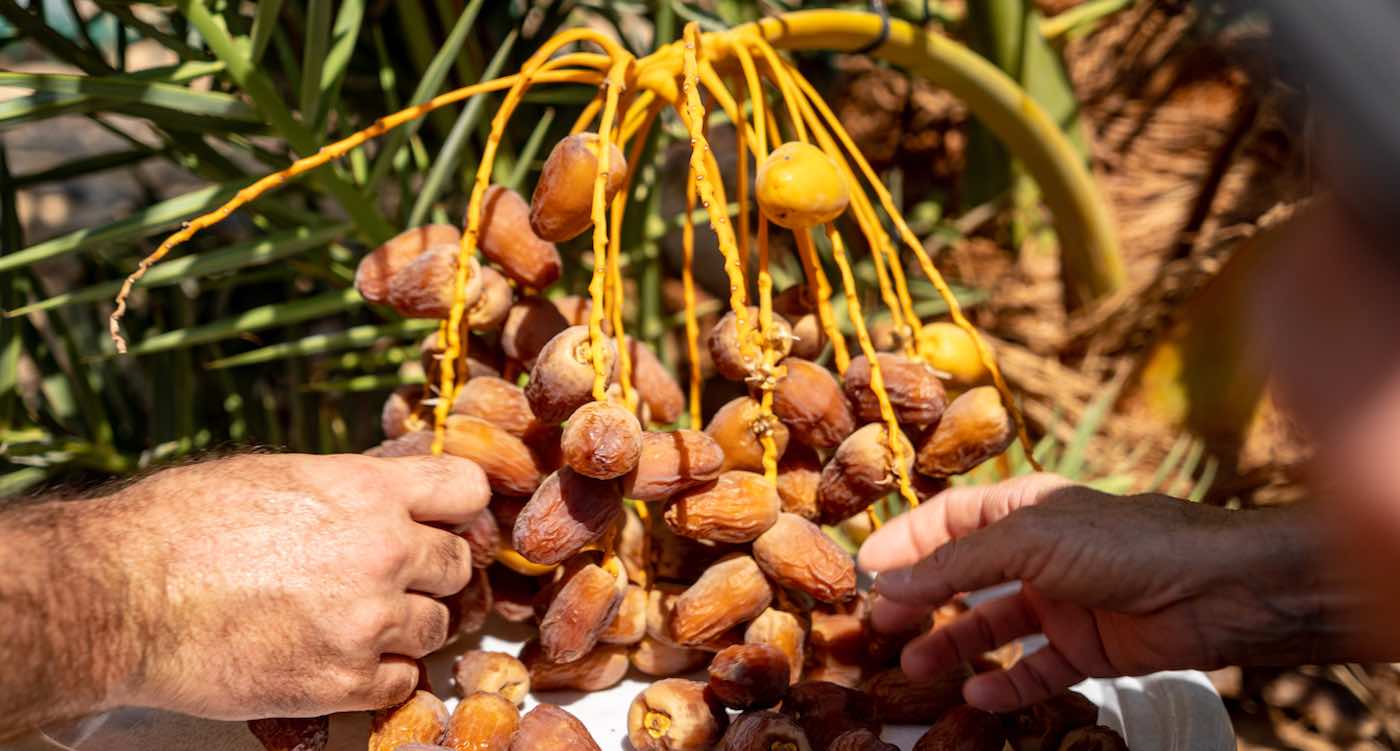Seeds from the time of Jesus and the Maccabees are being renewed—and grown amid the fruits of Jewish-Arab unity.

We all know the resurrection story from 2,000 years ago described in the pages of the Christian bible. Recently, a restoration of life, in a sense, took place in the Holy Land—but with 2,000-year-old dry date seeds from the same region where the religious legends began.
In the 1960s, when archaeologist Yigal Yadin dug at Masada, an ancient fort that is one of Israel’s most popular tourist attractions, he found a catchment of Judean date seeds.
Through radiocarbon analysis, the seeds of the species Phoenix dactylifera were shown to be around 1,990 years old, or from 35 BCE to 65 CE, when the Roman philosophers Strabo and Pliny were writing about the Judean date’s medicinal qualities.
15 years ago, Dr. Elaine Soloway of the Arava Institute for Environmental Studies, along with Dr. Sarah Salon of Hadassah Medical Center, were able to miraculously germinate one of the seeds.
In honor of its longevity, it was named Methuselah, after the longest-living human being in the Bible (Genesis 5: 21-27). Methuselah, however, being a male tree, would not be able to produce a date without a female partner. So in 2014, six seeds were germinated from 32 that were unearthed in archaeological digs in the Judean Desert and near the Dead Sea, from a similar age.
They were also given Biblical names, but only one female—Hannah—flowered.
RELATED: Muslim Cleric Who Hid 262 Christians During Attacks is Honored by the U.S.
In the spring of this year, she was pollinated using the powdery grains from Methuselah. And soon, Hannah produced 111 dates that were recently harvested..
Most of the semi-dry dates with reddish-blonde color will be used for research, but the masterminds behind the project got to taste a few, with Dr. Soloway enjoying the “honey or caramel aftertaste.”

The home of these extraordinary trees is the Kibbutz Ketura campus of the Arava Institute located on the Israeli-Jordanian border in the dramatic Arava Valley—with the steep, mile-high, red mountains of southern Jordan – biblical Edom – on one side and the whitish limestone from ancient ocean floors on the Israeli side, in a section of the Great Rift Valley between Syria and Africa.

There is something else remarkable about the home of these dates. Since 1996, the Arava Institute has brought together Israeli, Palestinian, and Jordanian college students to learn how to cooperatively solve the regional and global challenges of our time.
Foster cross-border environmental cooperation through discourse at a time when it is so needed, the leaders here engage civic organizations and individuals representing Jews and Arabs with both state and private interests to discuss, develop, and negotiate formal and informal environmental agreements.
The Arava Institute reminds participants that the conflict between Israelis and Palestinians is about land—more precisely, the borders that nations draw on the land. When the land is looked upon solely as a geopolitical instrument, it is viewed as one of the major stumbling blocks to any reconciliation or just settlement of the conflict. However, when the land is approached, as it is at Arava, from an environmental perspective—which knows no political borders, walls and fences—new frameworks open up, including in the political sphere: New dynamics are created.
The student body of the Arava Institute is made up mostly of Jews, Christians, and Muslims—and in those three religions, born in the deserts of the region, dates and date trees have always played an important role, according to Rabbi Michael M. Cohen, who teaches at the Arava Institute and also at Vermont’s Bennington College.
“Following the example of Muhammad, Muslims traditionally break their daily fast during Ramadan with a date. In the Jewish Torah, dates are considered one of the seven most important species of the Land of Israel. And Jesus was reportedly welcomed into Jerusalem with his supporters waving date palm branches.”
RELATED: Israeli and Palestinian Farmers Find Peace Through Olive Oil
Grown on this campus steeped in faith, the dates of Methuselah and Hannah, like all the great redemption stories, remind us that what today appears to be dead or beyond reach can in fact be revived to help create a better, more just, and redeemed tomorrow.
SHARE The Fruits of History and Peace With Friends On Social Media…





















When I visited the promised land in December 2017 I noticed the great difference between the dire Palestinian land and the Israeli fertile land. I wondered why the leadership did not share their technology with their ancestral brothers. It’s good that the Arava Institute is addressing this.
@joestuffsda, the problem isn’t so simple as the Israeli leadership not sharing their tech with their ancestral brothers, as you put it. This is a longstanding issue, and it’s not one-sided. The Palestinian Authority (PA), which administers the West Bank, and Hamas, which controls the Gaza Strip, have a history of rejecting signs of cooperation with Israel, for a number of reasons — including, in some instances, their refusal to recognize Israel’s legitimacy.
For example: Last May, the United Arab Emirates (UAE), which didn’t have diplomatic ties with Israel until August, attempted to deliver a reported 16 tons of medical equipment to help the people in the West Bank and Gaza during the pandemic. They sent the plane carrying the aid to an airport in Tel Aviv, to be distributed from there.
According to the news outlet Al Jazeera (not known to be pro-Israel), the PA rejected the shipment on political grounds. The PA claimed that the UAE should have coordinated the shipment directly with the PA, and not with Israel. It accused the UAE of using the shipment as a “cover” for building ties with Israel. The PA accused the UAE of not coordinating with them directly. Here is a link to the Al Jazeera article from May 2020: https://www.aljazeera.com/news/2020/5/21/palestinian-authority-rejects-uae-aid-sent-via-israeli-airport. This story also appeared in other news outlets at the time.
(Last March, toward the start of the pandemic, the U.N. — generally not pro-Israel — hailed Israeli-Palestinian cooperation in efforts to curtail the spread. This effort broke down, alas, by July. The U.N. News cited, among other reasons, “the Palestinian Authority’s refusal to accept any clearance revenues transferred by Israel, [which] is blocking the ability of Gaza inhabitants to travel outside for treatment and triggering delays in the delivery of humanitarian assistance.” See https://news.un.org/en/story/2020/07/1068791)
It’s sad that even when aid was available through a non-Israeli source, the PA chose politics over its people. Subsequently, the aid was sent to the Gaza Strip, according to Haaretz, a liberal Israeli news outlet known for its anti-Netanyahu perspective.
This is only one example of how complicated the situation is in Israel-Palestine, regarding the sharing of solutions for regional problems. As always, things may not be as they appear at a glance.
I, too, support the Arava Institute’s mission and activities. It’s a beacon of light and hope for everyone.